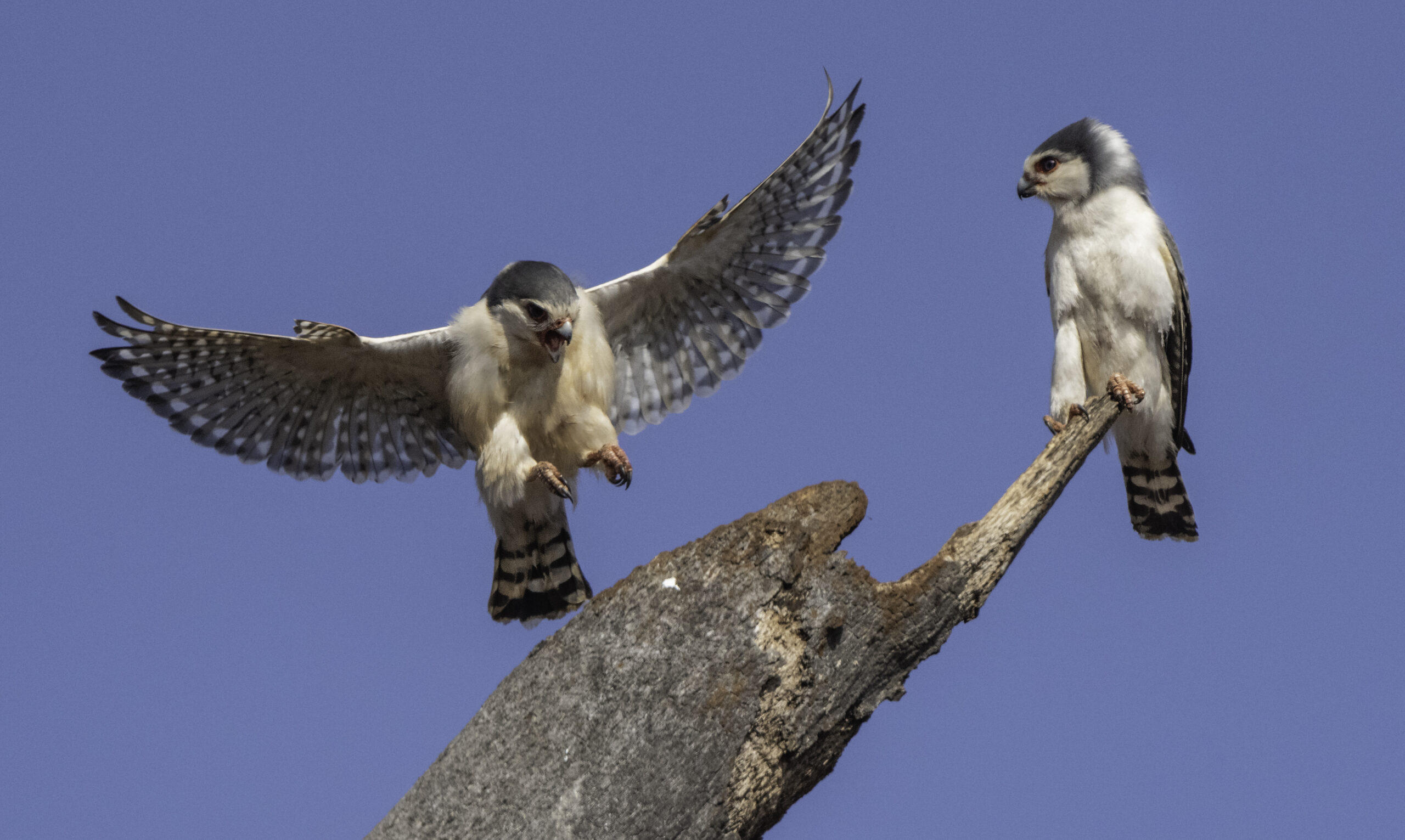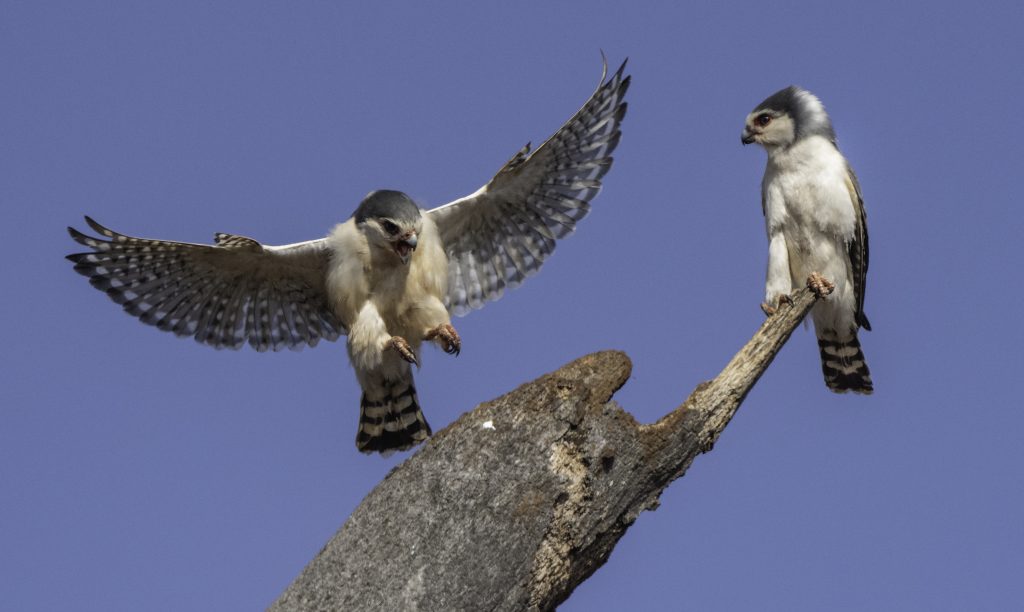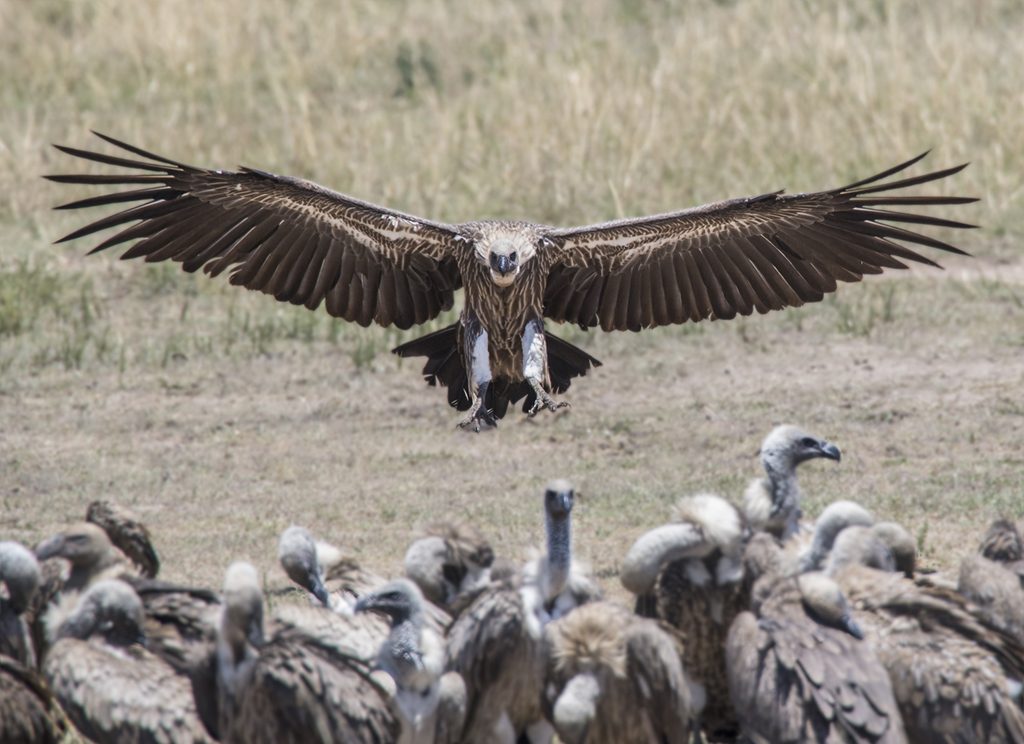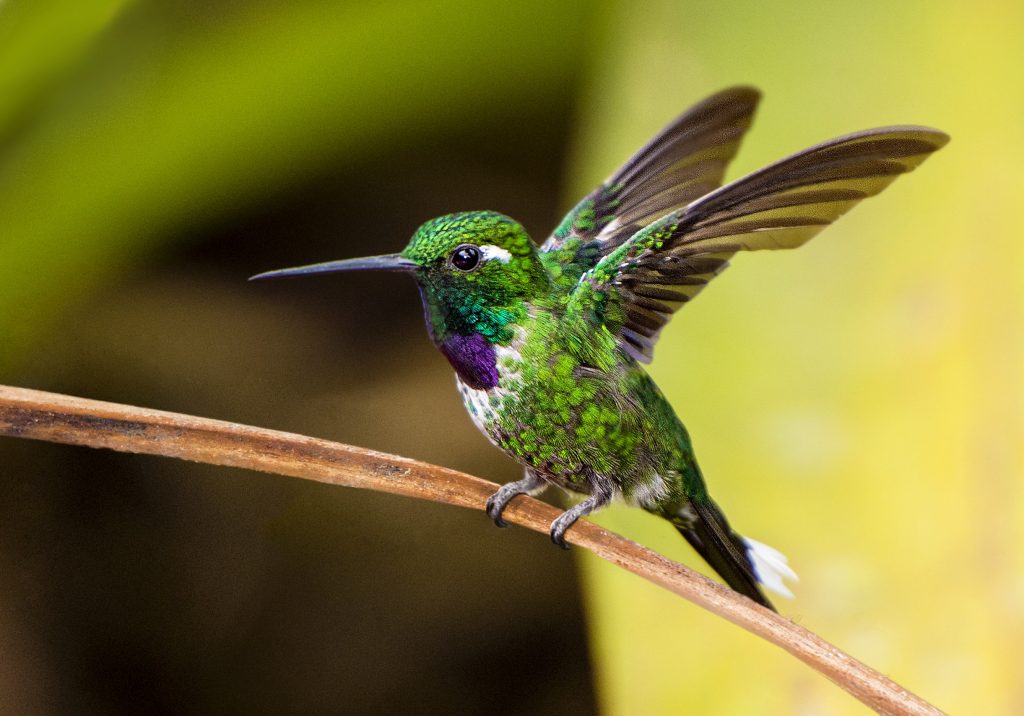
Getting a photo of a bird poised for takeoff, with its wings raised, legs bent, and expression focused in concentration, can make for amazing bird photography. The problem is, little birds take off so fast, getting that perfect shot is almost impossible. When a bird takes off, its motions are so quick that the photo is almost always blurred and you miss that perfectly poised moment.
Capturing Birds at the Best Possible Moment
When birds land, however, you can get more amazing shots than you realize. At the moment of landing, a bird is slowing down, making it easier to capture the tension in its legs as it reaches out for a perch and the concentration in its eyes as it settles on a branch.
Birds have patterns in their favorite landing spots, perches they’ll use again and again. This lets a bird photographer focus on exactly the right spot to frame their shot, moving around to position the background and lighting for the best effect. Even if the bird isn’t there, it will come back to that perch and you’ll have a chance to make that shot. I used to chase birds from perch to perch, but if you’re patient, they will come back to their favorite spots and it’s a lot less work for you to get the best bird photography.
Size Matters When it Comes to a Perfect Landing
The size of the bird also matters for landing shots. Big birds, like birds of prey or herons, just float down as they land. This is a great opportunity to really showcase their wings and the strength in their legs, and makes for fantastically dynamic bird photography.
Smaller birds, like hummingbirds and passerines, land much more quickly, and working with a guide or partner can help you get great shots. As you focus on the perch, have your helper watch the bird and let you know when it’s coming in for a landing, and you can press the shutter to get the full range of landing shots. The more pictures you shoot, the more likely it is you’ll get exactly the shot you want.






